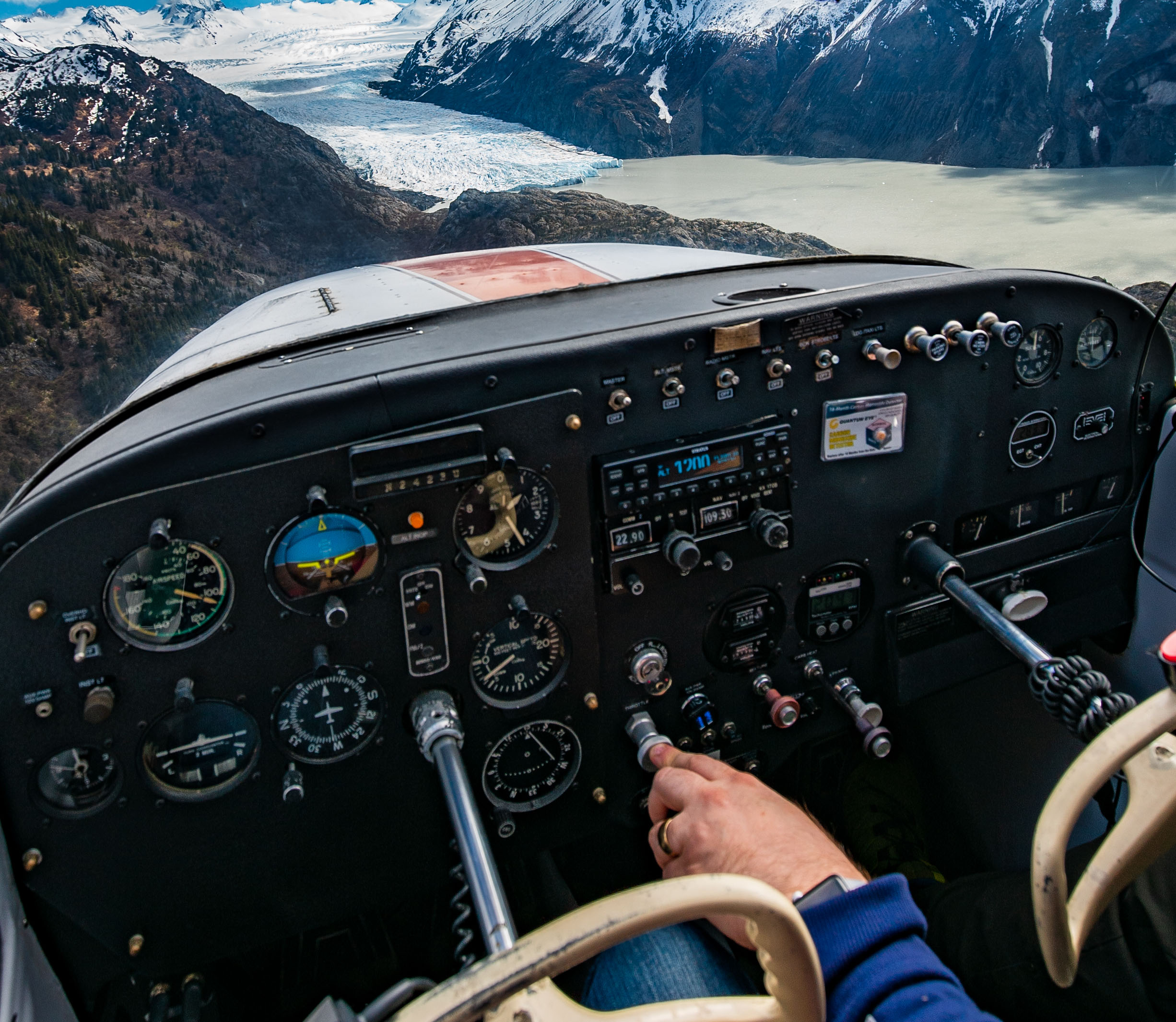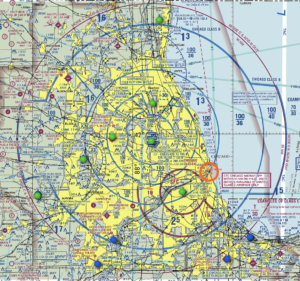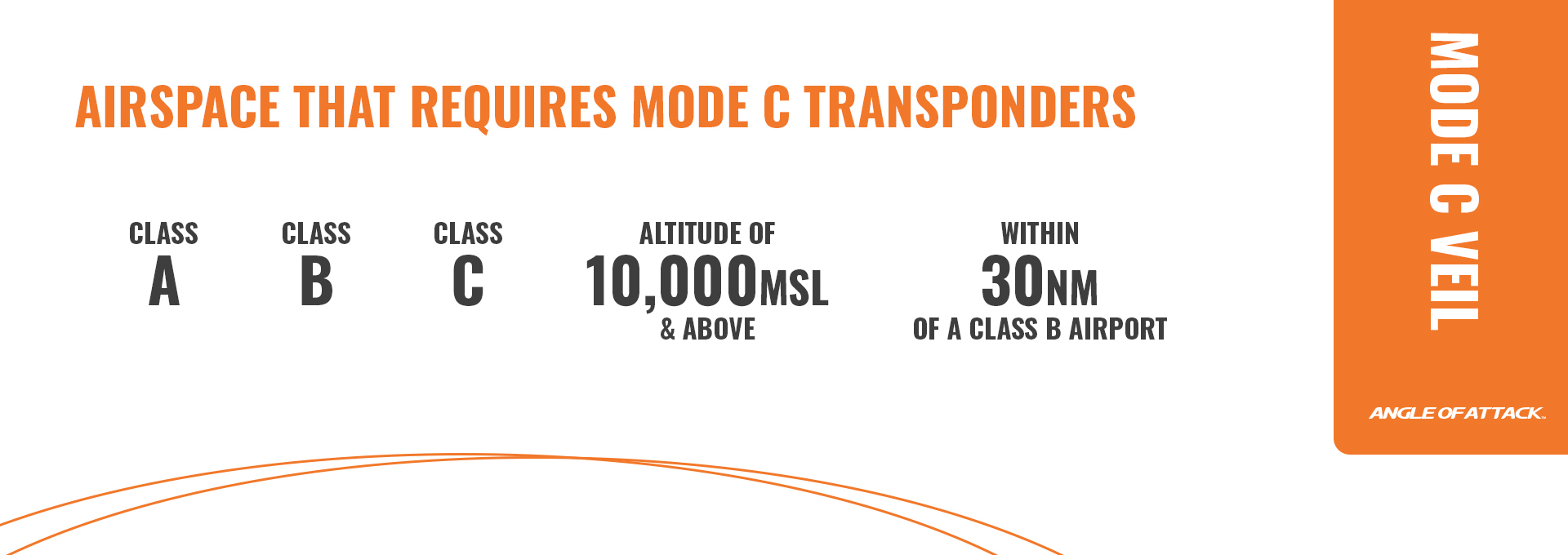
The Mode C Veil is one of the most talked-about aspects of airspace requirements. It’s the crossroads between radar, airspace, and emerging technology. You have likely heard the term “Mode C Veil” applied to a lot of different things. Well, today we are going to clarify what exactly is the Mode C Veil, what are the transponder Mode C requirements, the difference between Mode C and ADS-B, and the current issues surrounding both.
Let’s IDENT and dive right into it.
What is the Mode C Veil?
When someone is talking about a Mode C Veil, they are referring to a section of airspace that requires a Mode C transponder. A Mode C transponder gives air traffic control (ATC) your altitude and an identification code. Specifically, a Mode C transponder is required if you wish to operate in Class A, B, or C airspace, at an altitude of over 10,000′ MSL, or within a 30-nautical mile radius of the primary airport in Class B airspace. That is the Mode C Veil.
You may have also heard of Mode A and Mode S transponders. Mode A refers to a transponder that just provides an identification code only (no altitude information), while a Mode S transponder provides ATC with Mode C data (altitude and identification code) and can also communicate data to other aircraft.
When addressing Mode C requirements, a Mode S transponder will normally meet these requirements. However, most Mode A transponders will not meet these standards.
Mode C Transponder Required Airspace
Again, Mode C required airspace includes Classes A, B, C, 10,000 MSL or above, and within 30 NM of a Class B airport. There is an exception to the Class B Mode C requirements for the small class of “gliders, balloons, and aircraft without a certified engine-driven electrical system.”

The Mode C Veil surrounding a primary airport in Class B airspace is indicated on a VFR Sectional Chart by a magenta ring 30 NM away from the airport with the term “MODE C” on it.
If you are having a hard time understanding the different types of airspaces and the equipment required for each, Angle of Attack’s Online Private Pilot Ground School can really help you out. Our streamlined graphics and visual diagrams make learning the airspace requirements simple and painless.
Transponder Mode C Requirements
Do I have to have a Mode C transponder in my plane? Well, that depends. The technical answer is no IF you don’t plan on flying in airspace that requires Mode C (remember that’s Class A, B, C, above 10,000 MSL, or 30NM from Class B airport).
Under CFR 91.205 you’ll see that in the list of required equipment for VFR flight there is no mention of a transponder. For homebuilders wondering if they are required to install a transponder, the Experimental Aircraft Association has confirmed the FAA regulations don’t require one in certain situations. This means if you are flying without a Mode C transponder you will be limited to flight in Class D, E, and G airspace. Whether or not that’s practical for you, depends on where you fly and the type of flying you plan on doing.
If you live in a rural area and only plan on flying short local flights in your J-3 Piper Cub then maybe a transponder isn’t practical. However, for the majority of us who do plan on flying cross-country or into more complex airspace, a Mode C transponder is a must. Mode C transponders typically cost anywhere from $2,000-$5,000, depending on the functions you want. If you do install a transponder in your plane, remember that under CFR 91.413, every 24 months your aircraft must have its transponder tested and certified.
What’s the Difference between a Mode C Transponder and ADS-B?
The hot-button issue on transponders for the past three years has been the requirement for Automatic Dependent Surveillance-Broadcast (ADS-B). ADS-B allows equipped aircraft and ground vehicles to broadcast their identification, position, altitude, and velocity to other aircraft and ATC.
You may be thinking, well that’s what a Mode C transponder does, right? You’re exactly correct. For the most part, Mode C transponders and ADS-B provide the same information. The difference is in how they deliver that information. Mode C transponders rely more on radar-based systems, while ADS-B is more satellite-based. ADS-B, typically, does not outright replace your Mode C transponder but is an addition to it.
The reason ADS-B is such a hot topic is that starting on January 2, 2020, all Mode C Veils required ADS-B as well (ADS-B required coverage also expanded into parts of Class E and C airspace too). The FAA’s rationale behind this requirement was that ADS-B was much more reliable than radar-based systems and therefore provided a much safer air traffic system where everybody could see everything moving.
This requirement caused over 100,000 aircraft to rush to their local mechanics to become compliant. The artificial increase in demand for ADS-B caused me to have to wait four months before getting a spot with my mechanic to get ADS-B installed. Chris also had a wild experience with getting his transponder up to date. Check out his experience!
What Happens if I Enter Controlled Airspace without a Mode C/ADS-B equipped Transponder?
This is an interesting issue. If you fly without Mode C/ADS-B into airspace that requires such equipment, without obtaining a proper Letter of Deviation for your circumstances, you are violating an FAA Regulation. The FAA, if they wanted, could bring the hammer down on you.
However, the FAA in 2018 instituted its’ “Compliance Program” which seeks to correct unintentional deviations without the devastating effects enforcement actions can bring. Basically, if you accidentally deviate from regulation and comply with the FAA you won’t have your wings clipped.
Unintentional is the keyword there. If you knowingly fly into a Mode C Veil without the proper equipment, the FAA will be much less sympathetic to you. Additionally, we are now 2+ years removed from the ADS-B change-over date, and the time to claim ignorance of the new regulations has long passed. In short, you need to get compliant or stay out.
 The Mode C Veil is an important part of the connection between airspace and equipment requirements. Understanding the Mode C Veil requires a solid foundation in the different types of airspace and air traffic communication systems. If you need a refresher on these concepts, don’t hesitate to reach out to one of our instructors or check out our Online Ground School Options for Private, Instrument, or Commercial tickets. All of which cover airspace and transponders in more detail.
The Mode C Veil is an important part of the connection between airspace and equipment requirements. Understanding the Mode C Veil requires a solid foundation in the different types of airspace and air traffic communication systems. If you need a refresher on these concepts, don’t hesitate to reach out to one of our instructors or check out our Online Ground School Options for Private, Instrument, or Commercial tickets. All of which cover airspace and transponders in more detail.

Michael Brown grew up flying on the banks of the Tennessee River in Chattanooga, TN. He obtained his private pilot’s license in high school and has instrument and seaplane ratings. Michael graduated from Texas Christian University, where he founded the school’s flying club, with a double major in Business and Communications. He is currently a law student at Tulane University, studying transportation law. Michael was named the Richard Collins Young Writing Award winner and has had his legal writing recognized by the American Bar Association’s Air & Space Subcommittee. When he is not flying or studying, Michael enjoys riding his bike and cheering on his Atlanta Braves.

Stay Connected
Be the very first to get notified when we publish new flying videos, free lessons, and special offers on our courses.





